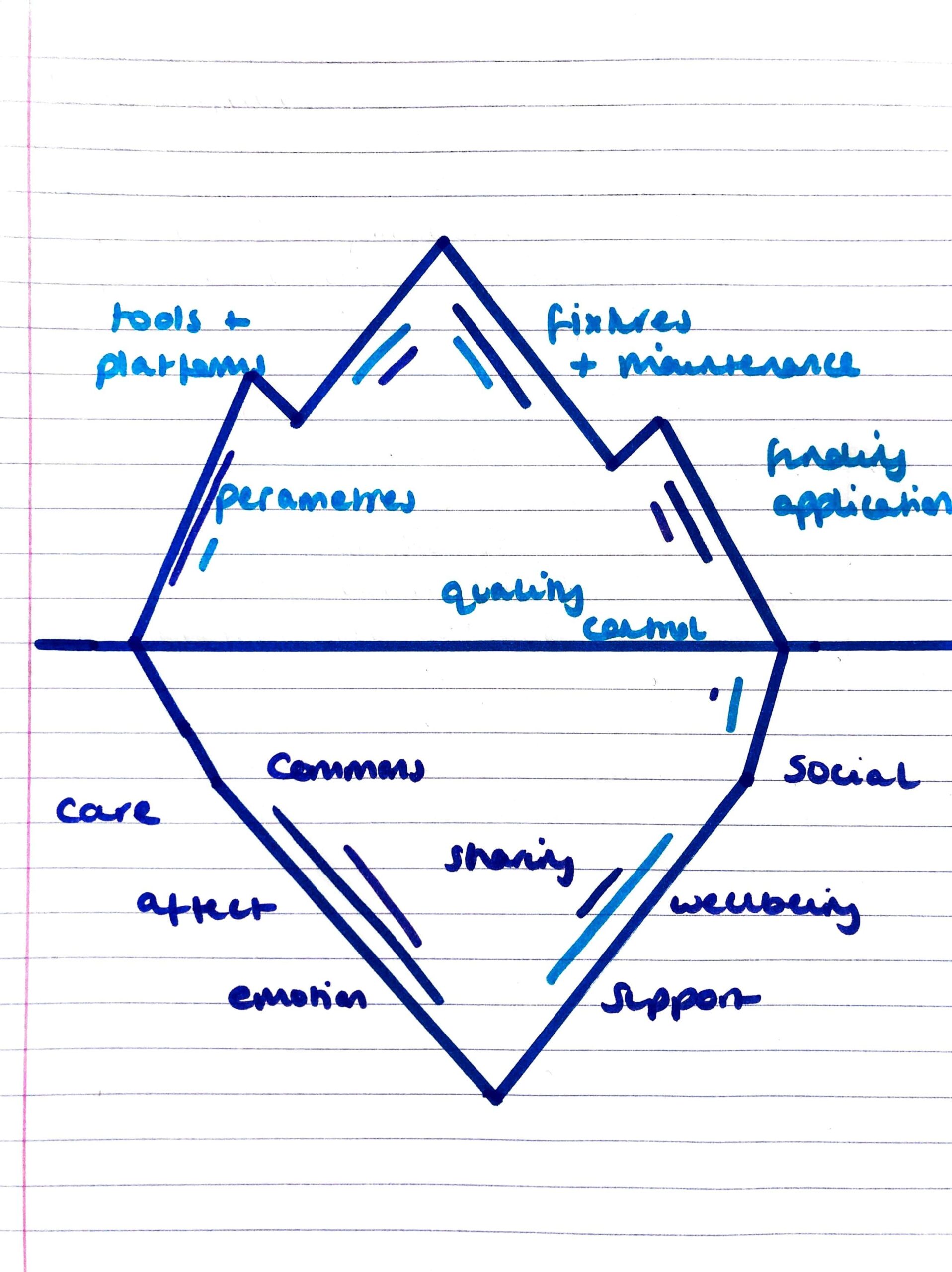Infrastructural Undercurrents
The anatomy of an organisation is made up multiple and complex components, parts and layers. Despite the nuances and idiosyncrasies that make up individual organisations, each are united in their requirement to be supported by an assemblage of visible and invisible infrastructures.
Visible infrastructures can be identified through tangible, or surface manifestations, such as the physical parameters of a space [be that physical or digital], the material assets situated within the space and the outputs organised, produced and presented.
Invisible infrastructures can be understood as the immaterial assets that form the guiding ethos of an organisation, such as conditions of representation and accountability, communication and support or collaboration and care.
It is through the interweaving of these visible and invisible infrastructures that organizations are able to establish their functional and methodological foundations, regulate their malleable systems of operation and produce environments that are open, responsive and accessible. In doing so integrating practices of wellbeing and support that permeate throughout the organization and into their wider publics.
This being said, an organisation’s identity, working operandi and conditions of safety and wellbeing are typically identified through visible means, particularly the condition of the space itself and the level and/or quality of its output. Therefore, despite it being very much in invisible infrastructures that we are able to enact conditions of intersectionality, accountability and inclusivity – in turn maintaining more sustainable spaces and methods of organising – these invisible infrastructures are often overlooked.
Infrastructural Undercurrents is a body of research that explores the invisible infrastructures that underpin arts organisations, and methods of organising through the lenses of care, sociality, affect and emotion. The research will be undertaken through the dissecting of organisational anatomies, structures, methods and systems. Firstly, through the identification of key invisible infrastructural layers that form organisations and methods of (self)organising, before then focussing on a series of specialised lines of inquiry based on the theoretical lenses of affect theory, emotional infrastructure, social infrastructure and care methodologies, to understand how these conditions can firstly infiltrate, and then be reproduced within institutional settings.
By taking inspiration and departing from the works, practices and thinking of key individual and collectives such as Kimi Hanaeur/Press Press, Shannon Finnegan/Anti-Stairs Club Lounge, Sascia Bailer, Sarah Ahmed, Nomeda & Gediminas Urbonas, Chloë Bass, Erik Klingenburg and Nataša Petrešin-Bachelez, this project will act as both an exploration and critical examination of invisible infrastructures within (self)organising anatomies. In doing so, it seeks to question how the conditions of care, affect, sociality and emotion can help to form the basis for more inclusive organisational models and methods of (self)organising.
People
Amy Gowen, is a researcher, writer, curator and avid reader based in Rotterdam, with an educational background in English literature and cultural studies. Her interests lie in using varied forms of language, conversation and discourse to explore ideas of collectiveness, community and commoning. She graduated from the MA Arts and Society at Utrecht University in 2019 and has since worked as city and arts curator and publications editor at Onomatopee Projects in Eindhoven where she runs the programme and publication series Meeting Grounds. Outside of work she enjoys taking long walks, gardening and writing short stories.
